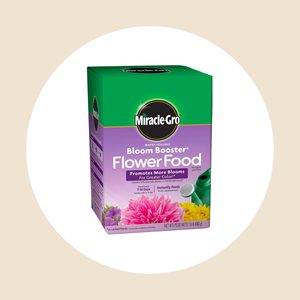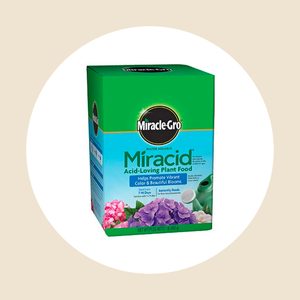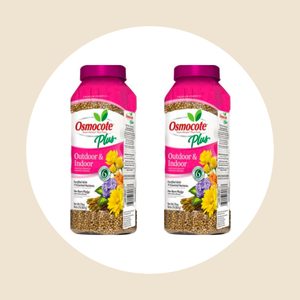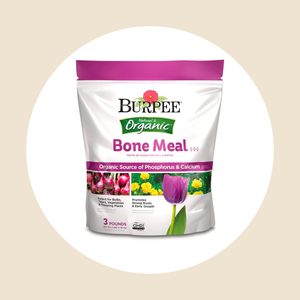Why Are My Hydrangeas Not Blooming?
Updated: Jul. 10, 2023

An abundance of lush greens with no blooming in sight can be a frustrating thing for a gardener of any skill level. Here's how to understand the problem—and fix it.
Hydrangeas have some of the most gorgeous blooms around. Just ask anyone growing these large puffy flowers in shades of blue, pink, creamy white and pale lime green. But sometimes, those pretty blooms won’t show up even if you’re caring for your hydrangeas perfectly.
Does your hydrangea have large green leaves but no flowers? Maybe that climbing variety has been making strides in height but hasn’t bloomed yet. This can be frustrating for a gardener of any skill level. Here are a few ways to help your hydrangeas with blooming so they can look their best this growing season.
When Do Hydrangeas Start Blooming?
It depends on the variety you have planted. As a general rule, most types of hydrangeas will bloom and produce flowers from mid-spring through late summer or early fall. There are some “everlasting” hydrangeas that will produce blooms all summer long, which have gained popularity thanks to their extended blooming habits.
How Long Do Hydrangeas Bloom?
The flowers start to appear in spring and can last all summer long into early fall. Hydrangeas growing in hot climates may stop blooming in the heat of summer but will rebloom in the fall.
Once the hydrangea blooms turn to flowers, the mopheads or lacy varieties add color and movement to the yard and garden. The hydrangea flowers can be the foundation plant of your landscape, create borders that provide privacy and generally add long-lasting pops of color around the yard. They make showy additions to cut flower arrangements and can also be dried in vases or made into wreaths for decorations.
Why Are My Hydrangeas Not Blooming?
First, identify the hydrangea that needs help. Each kind of hydrangea has its own specific growing requirements. If you aren’t sure of the hydrangea variety, take a sample of a stem with a leaf attached to a local garden center and ask for help with identification.
Improper Pruning
Some types of hydrangeas bud and bloom on the old wood from the previous growing season while others will set buds on new wood. Learn how to prune each type of hydrangea correctly, or you can end up doing more harm than good to the plant by removing the potential for blooms.
Transplant Shock
Have you recently transplanted a hydrangea in your yard and found that a previously healthy plant isn’t looking so good? It may need some time to readjust. A plant that has been moved can sometimes suffer from transplant shock.
Young plants or recently transplanted hydrangeas may take some time to establish themselves in a new spot and not set forth new blooms right away. Instead, the plant will direct energy to producing new roots and foliage and adjusting to the new conditions.
Lack of Water
Is your hydrangea located in an area that may prevent it from getting a steady flow of water or rainfall? Hydrangeas like to stay hydrated and need the surrounding soil to be evenly watered to support blooming. Make any necessary adjustments to water manually where necessary.
Lack of Sun
A hydrangea with no blooms may not be getting enough sun. Check the surrounding landscape and see if there are branches or growth from other plants that are blocking the sun from getting to the hydrangea. Most varieties of hydrangeas will do well in partial shade but a significant lack of sun can be a problem. Decide if other plantings can be cut back to allow more sun to reach the hydrangea.
How to Get Hydrangeas to Start Blooming
It is frustrating to have a plant with an abundance of lush green leaves but no blooms. The good news is that the hydrangea is otherwise healthy and it simply needs an adjustment to get the blooms to start to appear.
- Is your hydrangea being watered correctly? These plants need to be in soil that is hydrated with water. You may notice that a hydrangea in need of water on a scorching hot day will look withered and a soak from a hose can make a world of difference. Evaluate where the hydrangea is located and what the natural watering conditions allow from rainfall and what you can provide with a water source.
- Take a look at what kind of fertilizer you’re using. If the fertilizer you have applied has a high nitrogen content, the hydrangea will set forth foliage but probably no flowers. Switch to a fertilizer that is high in phosphorus to help promote blooming. This type of plant food can be found labeled as a “bloom booster.” Apply in the early spring and again in mid-summer for best results.
- Have you checked your soil’s acid levels? A mismatch of soil acid levels with the plant you’re growing is a common gardening problem. Hydrangeas do best in soil with an acidic pH. Your local garden center sells soil products marked specifically for acid-loving plants and could help your hydrangea start blooming again. The pH of your soil can also change the color of your hydrangeas.
























